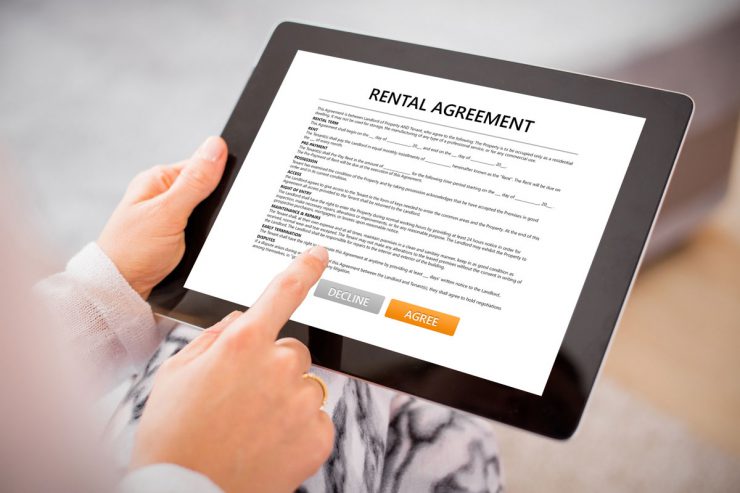Managers are on the front lines of many challenging issues for private residential communities but managing a pandemic is uncharted territory for most. With the number of cases of Covid-19 increasing in Florida and the fact that Governor DeSantis has declared a State of Emergency, proactive community association management professionals are thinking about how this virus might impact their residential communities and what can be done to blunt the impact.
There is an increased risk of contracting Covid-19 for health care workers, individuals with respiratory and other underlying health issues, as well as the elderly. Given the demographics in many shared ownership communities and particularly in “55 and Over” communities, managers should be prepared to contend with a fair amount of fear and confusion about the proper policies and protocols to follow to safeguard the community.
One of the first directives from a board may be to seal off the community as much as possible from outside exposure. The board may wish to limit guests, nonessential contractors and may even inquire as to whether or not residents who have traveled to high risk areas (China, South Korea, Iran or Italy) may be prevented from returning to the community.
Your first course of action is to calm some of the hysteria. If you think a directive sounds implausible, illegal or inadvisable, insist on contacting association counsel for a legal opinion regarding the proposed policy.
Overly restrictive protocol that unnecessarily impacts your residents’ freedoms and quality of life is not likely to withstand a potential legal challenge and also creates unnecessary strain in your community. Prohibiting owners from having guests or undertaking renovation projects is not warranted at this time.
You can suggest that your members voluntarily reduce the number of guests they invite into the community but prohibiting guests altogether is not a viable option. However, if your community’s governing documents prohibit short term rentals and you are aware that some owners are violating these restrictions under the guise of having non-paying guests when they are really renting out their units on platforms like Airbnb then working with counsel to curb this activity should be a priority. Limiting the amount of transient residents can reduce exposure.
It is also important to remember that not every private residential community will be impacted in the same way by the spread of Covid-19. In multifamily buildings where residents encounter each other frequently in the elevators, corridors and other common areas, the need to address preventative measures is much more pressing than in an HOA with single family homes and no enclosed common areas.
Draconian solutions to a problem often do more harm than good. There is no legal basis upon which you can prevent residents from returning to their homes. There is also no legal basis upon which you can deny a potential purchaser or potential renter who has recently traveled to a high-risk area.
Asking travel-related questions can have a chilling impact on the proposed transaction thereby exposing the association to a potential claim for interfering with a sale or lease. Be sure to speak to association counsel before revising your application forms or asking intrusive questions during your interviews.
Since Governor De Santis has declared a state of emergency some boards may reasonably believe that the statutory emergency powers found in Chapters 718, 719 and 720 of the Florida Statutes have been activated. However, those powers were enacted to assist boards in dealing with post hurricane issues so applying them to a medical emergency would be a novel approach. Don’t assume that your board can utilize the same emergency powers that are activated in response to damage caused by an event for which a state of emergency is declared; a legal opinion is needed before your board attempts to use any of the statutory emergency powers.
The board must continue to operate and administer the community’s affairs and holding regular meetings is a large part of that function. Many boards regularly experience poor attendance at their meetings so there is little reason to be concerned about holding meetings unless you know that you have an active infection in your community. Boards that are concerned about having meetings can certainly use technology such as in-house cable channels or Skype to allow residents to view their meetings from the privacy of their homes.
If you wish to minimize the spread of Covid-19 or the flu, use all of your association’s communication channels (newsletter, email or text group, website, direct mail, and in-house cable channel) to remind your residents to wash their hands frequently. You may also wish to place hand sanitizer stations in high traffic areas in the community. Advise your residents that if they are experiencing symptoms they should let you know and they should avoid using the recreational facilities such as the Clubhouse, pool and fitness room. Management professionals should follow suit and not report to work if they are feeling ill.
Let your residents know that if they are feeling ill or have any questions or concerns they can contact the Florida Department of Health’s 24-hour hotline that can be reached at 1-866-779-6121.
Lastly, make sure you have updated emergency contact information for all owners including any residents who may be particularly vulnerable. Covid-19 is the latest in a long string of challenges that those of us who serve community boards experience. This too shall pass but in the interim, prudence and caution is warranted.
Donna DiMaggio Berger
Shareholder, Becker
Ft. Lauderdale | bio









 JoAnn Nesta Burnett, Esq.
JoAnn Nesta Burnett, Esq.
 James Robert Caves, III is an attorney with the law firm of Becker & Poliakoff, P.A., which represents community associations throughout Florida, with offices in Ft. Myers, Naples and 11 other Florida cities. The firm focuses a substantial amount of its practice on condominium and homeowners association law.
James Robert Caves, III is an attorney with the law firm of Becker & Poliakoff, P.A., which represents community associations throughout Florida, with offices in Ft. Myers, Naples and 11 other Florida cities. The firm focuses a substantial amount of its practice on condominium and homeowners association law. 

 Howard J. Perl is an attorney with the law firm of Becker & Poliakoff, P.A., which represents community associations throughout Florida, with offices in Ft. Lauderdale, Miami, and 11 other Florida cities. The firm focuses a substantial amount of its practice on condominium and homeowners association law.
Howard J. Perl is an attorney with the law firm of Becker & Poliakoff, P.A., which represents community associations throughout Florida, with offices in Ft. Lauderdale, Miami, and 11 other Florida cities. The firm focuses a substantial amount of its practice on condominium and homeowners association law. 


 David B. Haber is the founding partner of Miami-based Haber Slade, P.A. He is a commercial litigator with 30 years of experience who has handled multiple complex commercial disputes throughout Florida, including complex commercial litigation, construction, and condominium and homeowners’ association disputes. David can be reached at
David B. Haber is the founding partner of Miami-based Haber Slade, P.A. He is a commercial litigator with 30 years of experience who has handled multiple complex commercial disputes throughout Florida, including complex commercial litigation, construction, and condominium and homeowners’ association disputes. David can be reached at  Frank Soto is a partner with the firm. He focuses on construction litigation. Frank can be reached at
Frank Soto is a partner with the firm. He focuses on construction litigation. Frank can be reached at 
 David T. Podein is a partner at the law firm of Haber Slade. He concentrates his practice in the areas of real estate leasing, financing, and acquisitions/closings, real estate development, condominium and community association law, and construction law. David can be reached at
David T. Podein is a partner at the law firm of Haber Slade. He concentrates his practice in the areas of real estate leasing, financing, and acquisitions/closings, real estate development, condominium and community association law, and construction law. David can be reached at 
